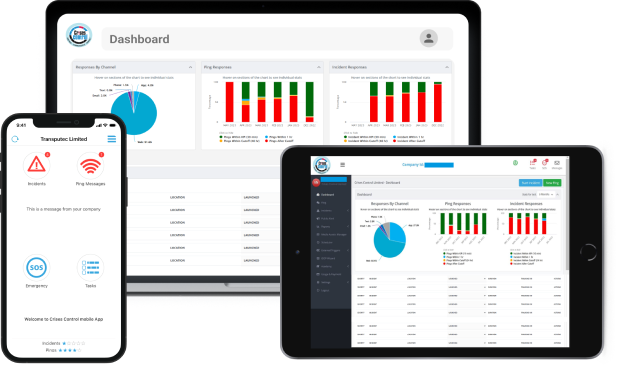Written by Sonny Sehgal | Board Member
In times of crisis, the stakes are high, and the margin for error is slim. Effective crisis management is critical to minimising damage and ensuring swift recovery. However, human error can significantly impact the effectiveness of crisis response efforts. A well-structured crisis management plan can be a game-changer in reducing these errors and streamlining decision-making.
In this blog, we will explore how crisis management plans work to reduce human error and enhance decision-making, and how Crises Control can support your organisation in this process.
Understanding Human Error in Crisis Situations
Human error during crises can take many forms, including miscommunication, incorrect prioritisation, delayed responses, and poor decision-making. These errors can lead to:
- Increased Risk: Poorly managed crises can escalate, causing more harm to people, property, and reputation.
- Inefficiencies: Time wasted on incorrect actions or decisions delays effective crisis resolution.
- Reputational Damage: Errors can harm public perception and trust in an organisation’s ability to handle emergencies.
Addressing these errors begins with understanding their root causes. Often, they stem from inadequate preparation, lack of clear protocols, or insufficient training.
How Crisis Management Plans Reduce Human Error
1. Providing Clear Decision-Making Frameworks
A well-crafted crisis management plan outlines clear decision-making frameworks, specifying who is responsible for each decision and action during a crisis. This clarity helps prevent confusion and ensures that decisions are made quickly and accurately. By defining roles and responsibilities, the plan minimises the risk of errors caused by overlapping duties or uncertainty.
2. Establishing Guidelines and Protocols
Detailed guidelines and protocols are essential components of an effective crisis management plan. These guidelines provide step-by-step instructions on how to handle various crisis scenarios, ensuring that all team members follow a consistent approach. Protocols also include communication strategies, escalation procedures, and contingency plans, which help reduce the chances of mistakes during emergencies.
3. Incorporating Scenario-Based Planning
Scenario-based planning involves developing and rehearsing responses for different types of crises. This approach prepares teams for various scenarios, improving their ability to handle unexpected situations effectively. By practising responses to hypothetical crises, teams can identify potential weaknesses in their plans and address them before real emergencies occur.
4. Enhancing Communication and Coordination
Effective communication is crucial in crisis management. A comprehensive plan ensures that information is shared promptly and accurately among all relevant parties. This coordination reduces the likelihood of miscommunication and ensures that everyone involved is aware of their roles and responsibilities, minimising errors related to information flow.
How Crises Control Enhances Decision-Making
1. Real-Time Information and Situational Awareness
Crises Control offers real-time updates and situational awareness, enabling decision-makers to act based on the most current and accurate information. By integrating data from various sources, Crises Control provides a comprehensive view of the situation, helping teams make informed decisions quickly.
2. Automated Alerts and Notifications
Crises Control’s automated alert system ensures that critical information is delivered promptly to the appropriate individuals. This feature helps prevent delays in communication and ensures that all team members are aware of important developments, reducing the risk of errors due to missed or delayed information.
3. Centralised Control Centre
With Crisis Control, all crisis-related information is centralised in one platform. This centralised Control Centre provides easy access to critical data, guidelines, and protocols, streamlining decision-making and reducing the risk of errors associated with searching for information across multiple sources.
4. Integration and Coordination
Crises Control facilitates seamless integration and coordination among different teams and departments. By providing a unified platform for communication and collaboration, Crises Control ensures that everyone follows the established protocols and works together effectively, minimising the risk of errors caused by lack of coordination.
Benefits of Implementing Crises Control
1. Improved Accuracy and Efficiency
Crises Control’s tools significantly enhance decision-making accuracy and efficiency during crises. By delivering real-time information, automated alerts, and centralised data, Crises Control ensures that teams can make informed decisions swiftly and effectively, minimising the risk of errors. With a remarkable 96% reduction in the time required to engage stakeholders, Crises Control helps you act decisively when every second counts.
2. Enhanced Confidence and Preparedness
With Crises Control in place, organisations can feel more confident in their ability to handle emergencies effectively. The comprehensive features and tools offered by Crises Control enhance preparedness and ensure that teams are ready to respond to crises with minimal errors.
3. Streamlined Processes
Crises Control’s automated and centralised systems streamline crisis management processes, reducing the workload on teams and allowing them to focus on critical tasks. This increased efficiency helps prevent errors that can arise from overwhelmed or overburdened team members. As a result, Crises Control delivers a 20% improvement in incident resolution times.
Conclusion
A well-structured crisis management plan is essential for minimising human errors and ensuring effective decision-making during emergencies. By providing clear frameworks, guidelines, and protocols, crisis management plans help streamline decision-making and reduce the risk of mistakes. Crises Control enhances these efforts by offering real-time information, automated alerts, and a centralised platform for coordination.
To see how Crises Control can support your organisation in improving crisis management and reducing human error, contact us for a free demo. Let us help you enhance your crisis management plans and ensure a more effective response to any situation.
Request a FREE Demo

